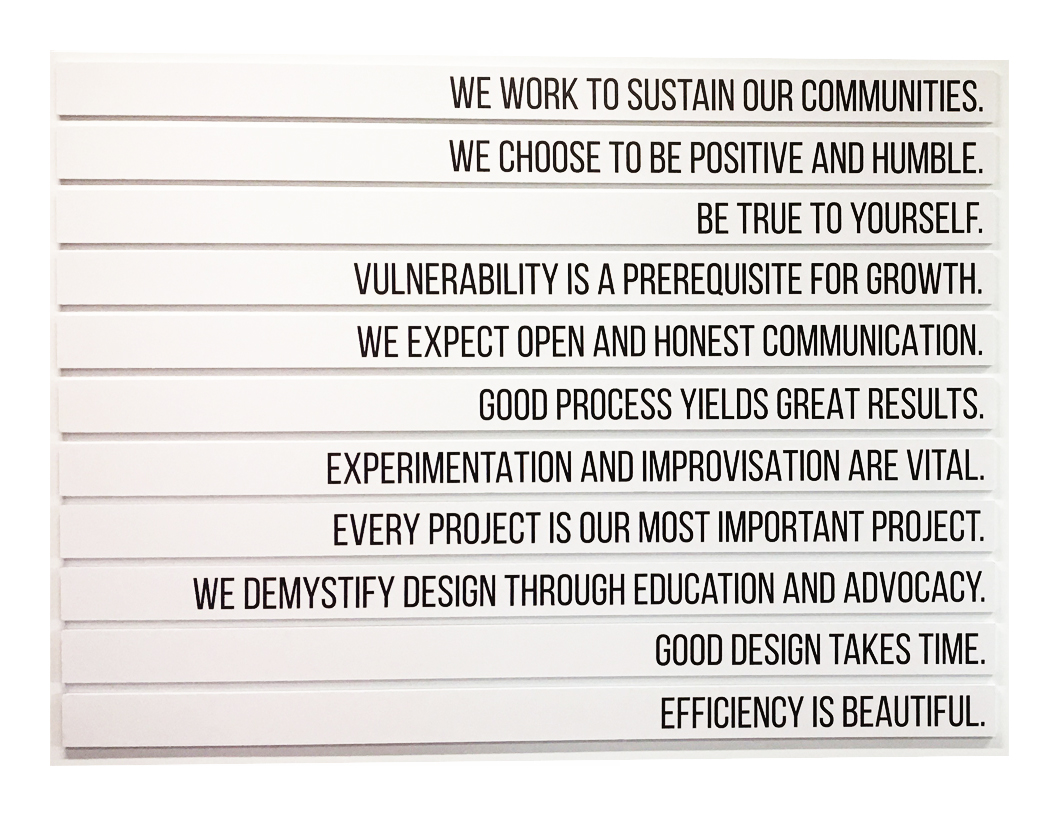Why Comparing Yourself To Your Competition Is A Losing Battle.
Values courtesy of DPAI.
There are a lot of businesses in the world who struggle to find their marketplace differentiators and that is especially true of architects and designers. As part of my work, I get to read a lot of what architects write about themselves. For the most part, the dreadful descriptions of their culture, their work and themselves is incredibly self-centered and focused on what they have accomplished in the course of their career. While there are some instances where this is necessary, it generally serves no purpose other than to generate pride in one’s work and boost the ego – not necessarily a bad thing. But if your goal is to attract more clients of the type that you work well with and build a lasting, value-based business, this is the opposite of what you should do.
A lot of architects will claim that building a value-based practice is their goal but fail to demonstrate this commitment through their actions. This form of cognitive dissonance takes them on a path of comparative and consubstantial self-promotion, which always leads to the same outcome: competing to get jobs on price alone, a losing strategy as it were, since there will always be a competitor waiting in the wings to undercut them.
The questions we ought to ask ourselves is: “How do we get out of this downward spiral and find clients who value our expertise and are willing to pay good money for it?”. This is where values come in. A business with solid values (like our good friends at DPAI) knows what it stands for, what its strengths are and does not hesitate to only seek new work that is aligned with those values. When doing so, values have an uncanny way to manifest themselves into our work, resulting in the attraction of like-minded clients.
It’s the combination of strong values with a laser-focus onto a niche market that will position a business to succeed. It starts with leadership asking themselves what they stand for from a values standpoint, which will eventually lead to being clear on their area of expertise and the market they eventually choose to focus on. Done well, this results in a clear differentiator and will set design businesses to demonstrably differentiate their expertise from the pack and grow into a nimble, confident business that attracts the right kind of clients.


